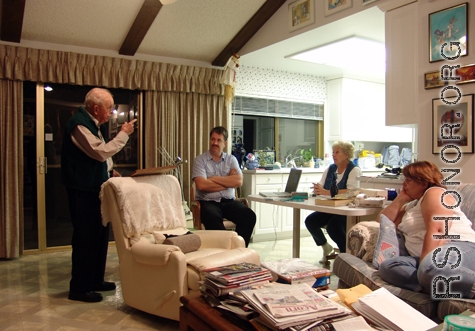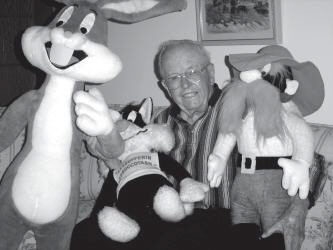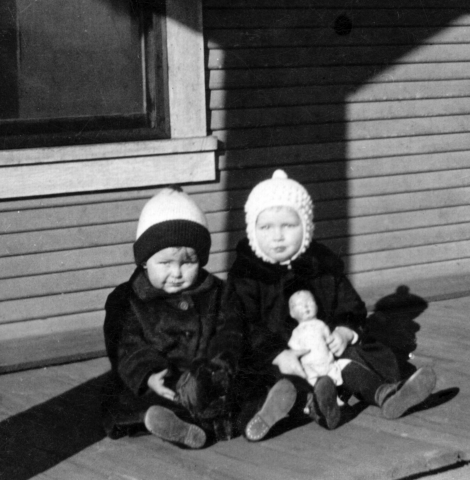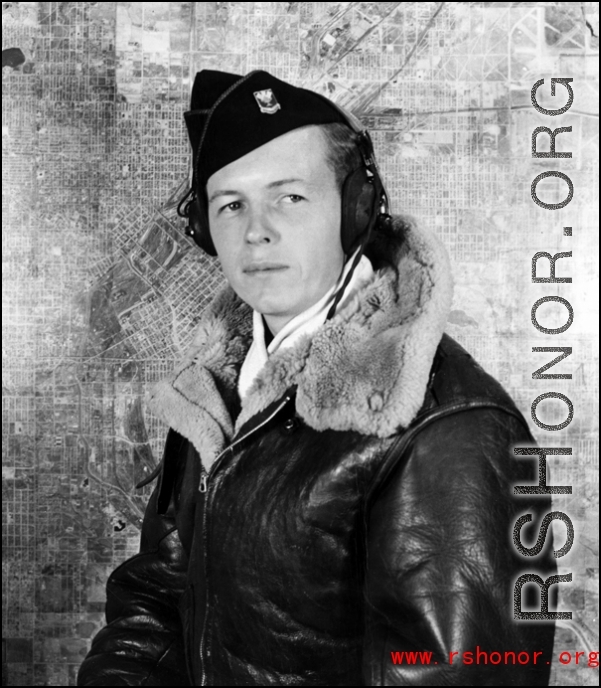Mr. Harold 'Hal' Geer, combat photographer in the CBI, went on to spend a lifetime looking at the world through the medium of movies, television, and photography--his work in fact shaped the way many of us view the world today.

Mr. Geer has graciously allowed us to scan many of his pictures from the CBI, and they are included on this website (see his collection listed on this page).
When we visited Hal and his wife in the summer of 2005, we were warmly welcomed, and regaled with rich stories from a lifetime spent actively taking part in a rich life. The Geers were wonderfully kind, and even when the talking, writing, and photos scanning reached one and two a.m., the Geers held out without the hint of a complaint, and we were able to tease out one or two last stories from Hal.

See also from the Simi Valley Acorn (July 8, 2005):
Pioneering animator celebrates a life of laughter
By Michael Picarella
pic@theacorn.com

Geer enjoys laughing. And he’s responsible for providing laughs to many generations all over the world with his work on the famous Looney Tunes cartoons.
"One night I was at the Motion Picture Academy and there was an actor named Lew Ayres ("All Quiet on the Western Front," "Battle for the Planet of the Apes") sitting next to me and—he knew me by screen presence and of course I knew who he was, but this was the first time we’d ever met—and he said, ‘Hal, do you have any idea how many smiles you’ve brought to the world?’ I said, ‘Well, I never thought of it in those terms. You’re always thinking of your audience and your ratings, but I never thought about it in that way before.’"
Geer was a key member behind 25 feature films, including "The Treasure of the Sierra Madre" and Disney’s "Peter Pan," more than 500 television shows, including "Route 66," 400 commercials and 100 short subjects, including many favorite Bugs Bunny cartoons. He ran the Warner Brothers cartoon department between 1967 and 1970 and was a major innovator in the technical processes of cartoon and live action photography.
At the early age of 10, Geer found an interest in cameras and film.
"When I was a paper boy on route, one of my customers, who had a portrait studio, invited me in one day to see him process film," Geer said. The young Geer was highly intrigued when he saw a print materialize before his eyes in a tray of photo chemicals. Geer became hooked and soon managed to get hold of a Brownie box camera.
"When I went off to Boy Scout camp, I took that little Brownie and instead of just taking snapshots, I took one friend and I followed him all around for a week, getting up in the morning, jumping in the lake, brushing his teeth. . . . I told his story with my camera."
Geer’s pictures later made an impression on the director of the camp, who asked to use the pictures for Boy Scout advertisements.
"That was my first professional photo job," Geer said.
Geer learned more about photography and motion pictures while in the U. S. Army Air Corps during World War II. As a motion picture cameraman he photographed 86 missions, which showed up in numerous newsreels.
Upon arriving home from the military in 1946, Geer took a color technician job in the special effects department at Warner Brothers. The young cameraman used his skills and training to perform "process" or "rear projection" work, which has since been replaced by the blue screen and green screen processes. An example of rear projection can be seen in Alfred Hitchcock’s "North By Northwest," where Cary Grant is driving a car and the background outside the car is projected onto a screen to appear like the car is moving and isn’t on a sound stage. (For those who didn’t know, Cary Grant was not driving that car.)
In 1950, Geer moved over to Disney. He stayed for five years, working in the special processes lab doing optical printing, color duplication and process projection. Geer worked under Walt Disney’s partner and friend Ubi Iwerks, an animator on "Steamboat Willy," the first cartoon with sound. Geer contributed to Disney’s TV show, which Walt Disney used to promote his biggest dream to date, Disneyland.
After his stint at Disney, Geer worked for independent companies, performing various jobs in the entertainment industry. In 1967, he went back to Warner Brothers to run the cartoon department. He also edited cartoons, started up a commercial department and produced and directed spots for TV.
In 1987, Geer retired. "I had the best job in the world," he said. His storytelling capabilities are a particular source of pride for Geer. In WWII, many photographers were technical, but couldn’t tell stories, he said. Geer’s strong sense of the narrative form served him well throughout his career.
He still uses his storytelling skills. He’s spent the last 15 years as a lecturer on cruise ship. "They call them enhancement lectures," Geer said. "After I retired, I went on a couple of cruises and I listened to one of the guys talking and I said, ‘I can do that and I can do better than he’s doing.’ So I talked my way into the job."
Geer and his wife take about four cruises a year. There was a time when they took seven cruises in a year. That turned into work, he said.
Geer has degrees in English and anthropology from USC. He’s a member of the International Combat Camera Association, a group of combat cameramen who buy historical cameras and put them in museums.
In 1985, Geer helped organize the Bugs Bunny star on the Hollywood Walk of Fame and was honored along with cartoon directors Friz Freleng and Chuck Jones, and cartoon voice master Mel Blanc.
"I’ve had fun all my life," said Geer, who’s a speaker box of cartoon history. Having been in the business for so many years, Geer speaks from experience, not from other people’s stories.
To see a list of some of Geer’s work, go to www.imdb.com and search "Hal Geer."

